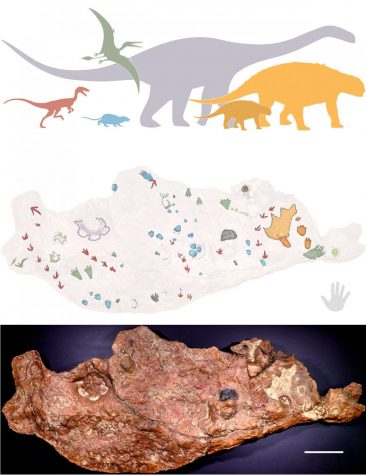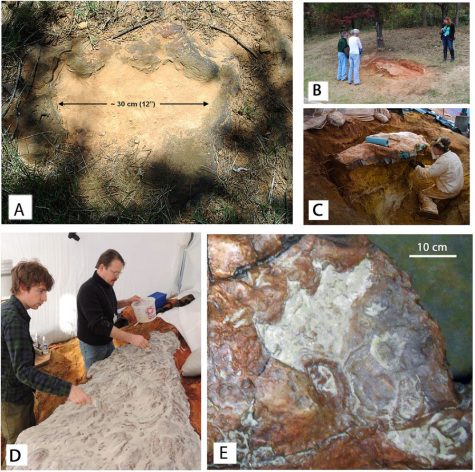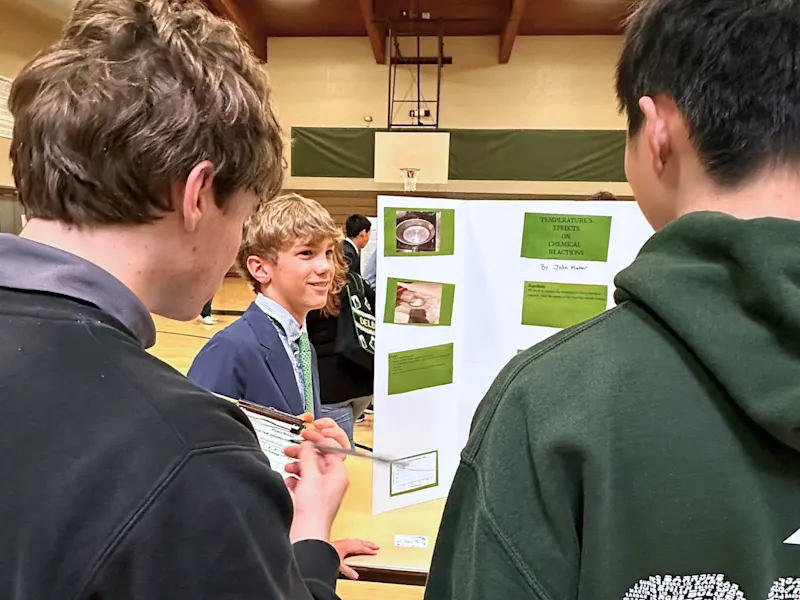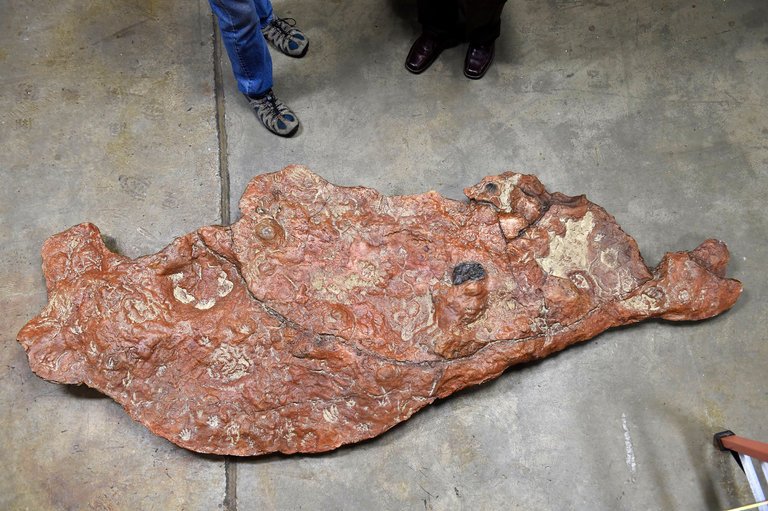An Interesting Find in NASA’s Parking Lot
March 19, 2018
In 2012, Ray Stanford, a paleontologist, was heading to lunch with his wife at NASA’s Goddard Space Flight Center in Maryland. As he was walking in the parking lot, he noticed a slab of rock that bore an eerie resemblance to the specimens of rock he studied. Indeed, this piece of sandstone contained approximately 70 tracks from several dinosaurs and early mammals. These findings were published on January 31, 2018 in the journal Scientific Reports (read the article here).
In the distant past, approximately 100 million years ago, dinosaurs and some mammals roamed the Maryland wetlands. Although the area was a swamp, the footprints of these animals were somehow preserved in stone. The slab of rock provides insights into how dinosaurs and early mammals behaved. For example, the track marks of a theropod suggest slow-paced foraging behavior. Martin Lockley, a paleontologist at the University of Colorado, Denver, a co-author on the new paper, said, “The concentration of mammal tracks on this site is orders of magnitude higher than any other site in the world.”
The sandstone contains numerous footprints. The slab contains the footprints of a nodosaur (an armored herbivore) with its offspring, a juvenile sauropod (a herbivorous dinosaur), and the tracks of four theropods (a relative of the Tyrannosaurus Rex that would live tens of millions of years later). The sizes of these dinosaurs varied among species. Scientists also found what appears to be fossilized feces, known as a coprolite in the scientific world.
The following diagram shows the tracks on the stone:
The presence of mammalian footprints is of great importance to paleontologists across the world. John Foster, executive director of the Museum of Moab in Utah, explained that the mammal tracks were “very interesting to me, especially the mammal tracks and what they show about structure and probable behavior.” Scientists have only found two locations, including this one, that contain mammal footprints from the era of dinosaurs. When scientists do find mammalian fossils, they usually only discover a single bone, tooth, or footprint. The slab of stone found in NASA’s parking lot, however, contains numerous footprints from both dinosaurs and mammals. For example, the stone contains the right and left feet of a mammal in a sitting position. These footprints were given the name of Sederipes goddardensis, which literally means “sitting footprint.” Scientists believe that the animals all passed over this spot on the ground over a short period of time, not likely more than a week or two.
The following diagram shows pictures of the site where the slab of stone was found:

This discovery has provided the scientific world, especially paleontologists, with a tremendous amount of information about the animals that roamed the earth millions of years ago. Perhaps somewhere, possibly under the ground you are currently standing on, there is a discovery waiting to happen.
























